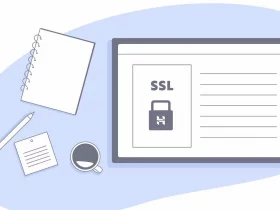Security is vital in today’s digital age, and with technology constantly evolving, it can be easy to make common mistakes during the development of your applications.
Ensuring your application is secure is crucial in order to maintain your trust as a developer and provide your users with the peace of mind that your software will keep their data safe.
In this article, we’ll cover the top common security mistake that developers make so you can improve your application’s security.
Validations And Invalid Input
Your application could be left open to injection attacks, which is where a malicious input is injected into your application, which changes how your application runs by forcing it to execute the hacker commands.
Following an injection attack, your data could be exposed or damaged, which may lead to you needing to shut down your operations for an extended period of time in order to fix the issues or combat the data breach.
Your application being vulnerable to injection attacks typically stems from improper validation and invalid inputs not being checked or corrected before the application is live, which is why it is vital you implement the appropriate quality checks before you release your application to the public.
Not Performing Regular Security Scans
By not performing regular security scans, your application is vulnerable to external attacks. Regular scans are vital as they provide you with an opportunity to detect new vulnerabilities or gaps in the code before they become an issue.
Once you know the problems, you can close the gaps and fix the vulnerabilities in order to improve your application’s security and avoid the risk of cyber attacks shutting your application down.
Weak Authentications and a High Level Of Access
As technology evolves, it’s imperative that you ensure your authentications are not weak by not allowing simple passwords and implementing multi-factor authentication processes.
Weak authentication provides a gateway for cyber-attacks which could lead to a data breach and cripple your application.
Furthermore, allowing end-users a high level of access they don’t need could also create problems as they will be able to use data that should only be accessed by the administration team.
Instead, make sure that your users only have the basic permissions they need to use the application and nothing more; this will secure the app and prevent data leaks, as well as make sure that only you and your team are able to make critical changes to the application.
Not Having a Security Strategy
Many developers don’t consider a concise approach to security when they are implementing measures into an application and typically scan for vulnerabilities without ensuring further protection is in place once the application is live.
Having a security strategy in place will streamline your processes and allow you to ensure that you are placing the right security measures for each project without leaving gaps that could be later exploited. For an effective strategy, you should implement a DevSecOps approach into your strategy, which will allow you and your team to create and look after security from the first day of a project through to the end product.
Creating Your Own Methods
Many developers like to look for their own solutions to problems, and in many cases, that can include security.
However, creating your own algorithms for security purposes may not be as ingenious as you think, and more often than not, it actually increases the gaps and vulnerabilities in your applications.
Forgetting To Test Regularly
Testing and more testing is the ideal way to ensure you improve your application’s security, and by not creating a schedule to test your product, you could be leaving it vulnerable to cyber-attacks which could lead to data breaches.
There are many tests, such as penetration tests, you will need to perform before you release your application to the public, but you should also have regular tests to ensure its continued security when it is in use.
One way to spot problems in your application is through fuzz testing; this test will use techniques to find bugs in your application which will provide you with the data needed to fix the problems before they become issues.
Fuzz tests are a highly useful tool that many developers utilize to ensure the application is not only running as expected but is also secure; for more information on this type of test, check out ForAllSecure and this guide to fuzz testing.
Using Outdated Software
As we mentioned, technology is constantly evolving and advancing, which means your software needs to keep up.
By using outdated software, your application could be open to attack as it will not be protected against new vulnerabilities that evolve with the advancement of technology.
In order to protect your application and its users, you should be updating and patching your software regularly while keeping updated on new advancements that could cause gaps in your security.










